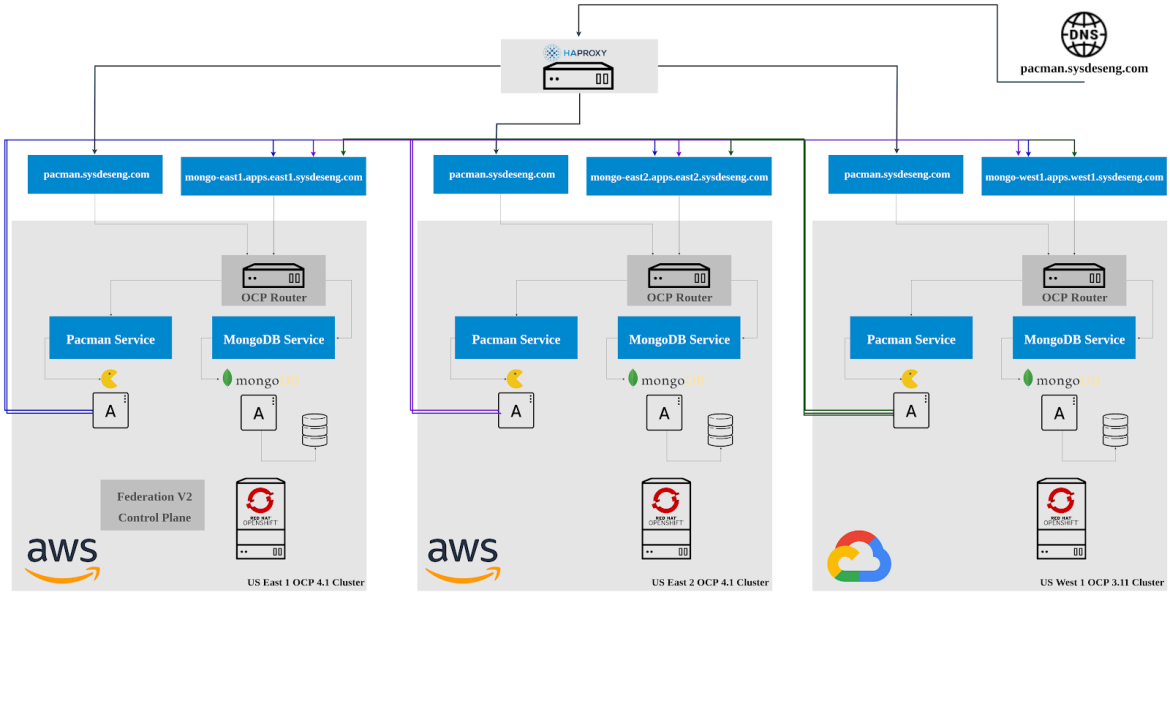Red Hat blog
Introduction
In the previous blog post we saw what KubeFed is and how to deploy KubeFed on Red Hat OpenShift. On top of that, we deployed a federated MongoDB ReplicaSet and a federated Pacman application.
In today's blog, we are going to use KubeFed to deploy the federated MongoDB as well as the federated Pacman across OpenShift clusters running on different cloud providers and versions.
Environment Description
We will have one OpenShift 3.11 cluster running on Google Cloud us-west-1 region and two OpenShift 4.1 clusters running on AWS us-east-1 and us-east-2 regions.
The application architecture used this time looks like this:
Moving applications across OCP 3.11 and OCP 4.1
The three clusters have already been deployed with the MongoDB and Pacman applications. In this video Mario Vazquez will cover how to move the Pacman application across clusters using KubeFed primitives and tooling.
NOTE: The content on this video corresponds to KubeFed v0.0.10 release, the current release as the time of this writing. Things are rapidly evolving, so changes are expected.
Next Steps
- KubeFed is fast evolving, so make sure to check out the GitHub repository from time to time to stay updated.
- If you want to learn more about KubeFed you can go through this Katacoda Scenario which will teach you the basics of KubeFed.
- The Operator will be mutated to deploy KubeFed in response to an API resource (e.g. like etcd, Prometheus Operators).
About the author
Red Hatter since 2018, tech historian, founder of themade.org, serial non-profiteer.


